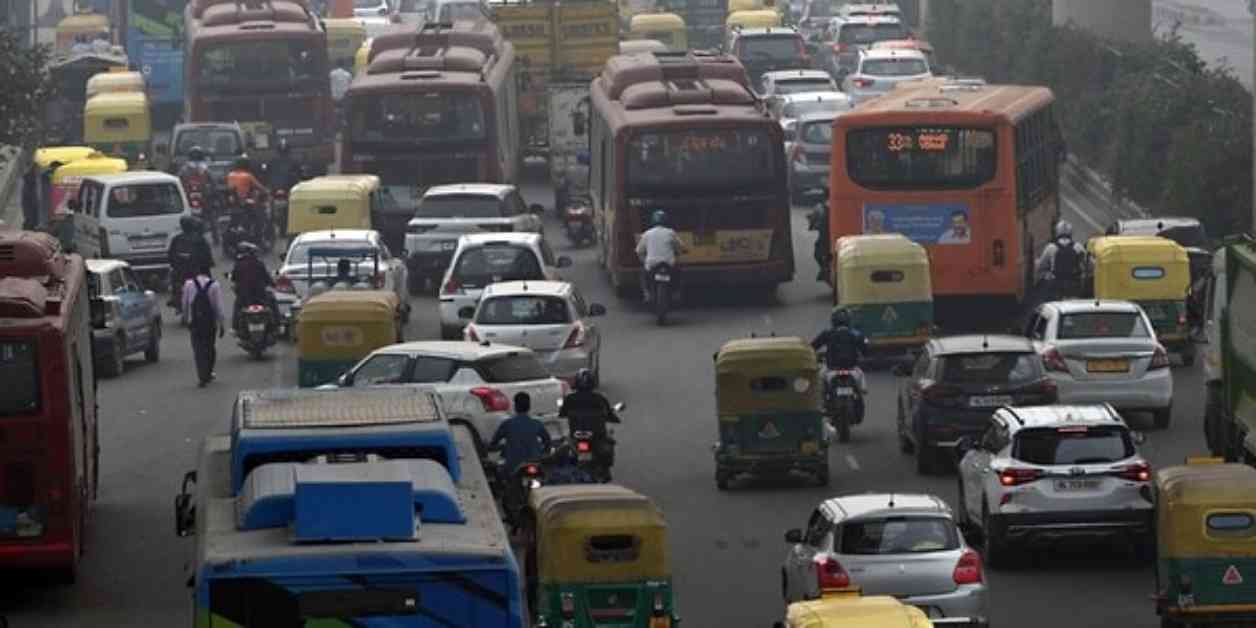Study Shows Alarming Increase in Death Risk Due to Air Pollution in Indian Cities
A recent study conducted in Indian districts has revealed shocking findings regarding the impact of air pollution on human health. The research, which focused on air pollution levels exceeding national standards, found that individuals of all age groups are at a significantly higher risk of death when exposed to high levels of pollution.
According to the study, air pollution exceeding national standards has been shown to increase the risk of death by 86 per cent in newborns, 100-120 per cent in children under five years of age, and 13 per cent in adults. These statistics paint a grim picture of the health consequences of living in areas with poor air quality.
The study was conducted by a team of researchers, including experts from the International Institute for Population Sciences in Mumbai. They analyzed fine particulate matter (PM2.5) pollution levels across over 700 districts in India, using data from the National Family and Health Survey (fifth round) and the National Ambient Air Quality Standard (NAAQS).
One of the key findings of the study was the correlation between household air pollution and the increased risk of death among newborns and adults. In households without a separate kitchen, the study found a higher likelihood of deaths among these vulnerable populations.
Impact on Different Age Groups
The study revealed that newborns and children under five years of age are particularly vulnerable to the effects of air pollution. In districts where PM2.5 concentrations exceeded the NAAQS level, the risk of death for newborns was almost two-fold higher, while for children under five, it was more than two-fold higher.
Moreover, the interaction between PM2.5 levels exceeding NAAQS and household air pollution was found to significantly increase the risk of death among newborns, children, and adults. Specifically, deaths among newborns increased by 19 per cent, children by 17 per cent, and adults by 13 per cent when exposed to high levels of pollution.
The authors of the study emphasized that PM2.5 levels are particularly high in the Indo-Gangetic Plain, which covers northern India. This is due to various factors, including agricultural practices such as burning crop residues and emissions from industrial centers and manufacturing hubs.
Regional Disparities and Recommendations
The study also highlighted regional disparities in clean fuel usage and household practices that contribute to poor air quality. In the middle and lower regions of the Indo-Gangetic Plain and in districts of central India, the use of clean fuel and separate kitchens in households is low.
Areas rich in forests, such as Madhya Pradesh, Odisha, and other northeastern states, rely heavily on unclean fuel sources like firewood, crop residue, and animal dung. These practices contribute to the high levels of air pollution in these regions.
The researchers called for increased awareness among people in vulnerable regions to promote the use of clean fuel and adopt practices that improve indoor air quality. They emphasized the importance of reducing anthropogenic PM2.5 emissions to meet national standards, which could significantly reduce the burden of disease and premature deaths in India.
Importance of Policy Interventions
The findings of this study underscore the urgent need for policy interventions to address air pollution in Indian cities. Policymakers must prioritize measures to reduce emissions and improve air quality to protect the health of their citizens.
Previous studies have shown that air pollution is a leading cause of premature death and various health conditions, including respiratory diseases, heart ailments, and cancer. The findings of this study further highlight the detrimental impact of air pollution on human health and the need for immediate action.
In conclusion, the study’s findings serve as a wake-up call for policymakers, healthcare professionals, and the public to take decisive steps to combat air pollution and safeguard the health of all age groups. By implementing measures to reduce emissions, promote clean fuel usage, and improve indoor air quality, India can mitigate the adverse effects of air pollution and create a healthier environment for its population.




















